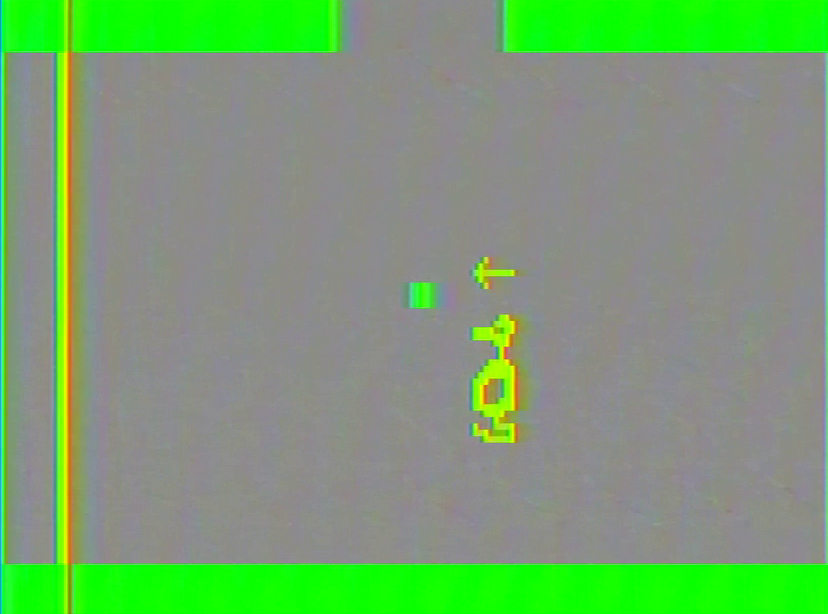
Of all the original games Atari put out for the VCS, Adventure may be the one that most people are familiar with today. Warren Robinett’s third and final VCS game – though seemingly the second to actually be released – serves as a counterweight to the arcade action of its March 1980 brethren Space Invaders by providing a nearly unique experience on a home console in its day.
According to Robinett – who graciously assisted me with information from his as-yet unpublished memoirs – he was inspired to make Adventure after getting to try out Colossal Cave Adventure during a visit to the Stanford Artificial Intelligence Lab early in 1978. For the unfamiliar, Colossal Cave Adventure is a text-based game built off of an earlier PDP-10 program written by Willie Crowther, simply called ADVENT or alternately either Colossal Cave or Adventure at the time, that had players exploring a real-world cave system. Crowther was a caver and a rock climber at the time, and looking to provide an activity for his children following his divorce, programmed a rendition of a portion of the Mammoth Cave system in Kentucky for them to explore. This included a variety of puzzles to solve and fantasy elements, and after Crowther shared it with his Dungeons & Dragons pals they provided some feedback and suggestions. Crowther abandoned the game once it had gotten to a functional state in early 1976, and remembered leaving a copy on his Bolt, Beranek and Newman computer system before leaving on vacation only to return and find it was being played across the nascent internet. It was after this point that Woods came across it through the Stanford medical school, then a graduate student at the university. After getting the source code from Crowther, Woods set about expanding the game starting around March 1977, adding environmental elements and more interactions with objects, as well as an end goal. It was this version that Robinett first encountered and said he was fascinated by. He then resolved to use its basic concept of moving between rooms, gathering objects and using them to get past obstacles as the basis for his next game, which would have a Dungeons & Dragons-inspired setting.
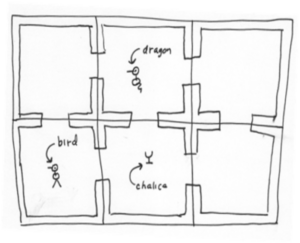
Since the VCS isn’t designed for full text adventure gameplay, Robinett worked on translating Colossal Cave Adventure’s core idea to a graphical interface using the limited capabilities of the system. The VCS’s “ball” sprite became the player character.The two high resolution sprites typically used for player objects became the objects located throughout the world, and the system’s low-resolution background graphics would be used for screen room designs. By that spring Robinett had worked out a basic display engine and game design. Despite being ordered by his new boss, George Simcock, to halt work on the project, as Simcock didn’t believe it would be feasible to translate the massive Colossal Cave program to the VCS, Robinett just ignored him and continued his project. Eventually he had put together an 8-screen feasibility demo to prove it was possible. Simcock wasn’t happy, leading Robinett to get annoyed and take a month-long vacation. During his absence, executives from marketing saw his demo and liked it, which did lead to it surviving as a project. But it wasn’t as simple as the executives wanting to see the demo fleshed out as-is. Warner Communications, which owned Atari at the time, had recently requested that the game company make a Superman cartridge as part of the merchandising blitz the company was undertaking following the success of the 1978 Richard Donner movie. Upon returning from vacation, Robinett was told the news that the higher-ups were interested in his prototype as the basis for Superman. Robinett insisted that he would do it if he had to but repeatedly proclaimed that he was really interested in making his Dungeons & Dragons inspired game, focusing his development energy on the key engine components that would apply to either theme. Ultimately he was saved when John Dunn volunteered to make Superman using Robinett’s existing engine as the foundation, which freed Robinett up to continue work on what became his Adventure. Only he wasn’t sure what direction to go with it, other than potentially adding a roadrunner to move around the map, though he couldn’t figure out what exactly it would do. Robinett volunteered to work on another game cart, BASIC Programming, eventually returning to Adventure in 1979 after chewing on ways to make it more interesting, such as adding new game play elements and expanding the game world with mazes. In the end, his eight-screen prototype was expanded into one with 30 screens, featuring mazes, castles, a chalice and one big secret.
While very little still exists from this period of the game’s development, the 2023 ROM release of Brad Stewart’s VCS prototype game Sonar included some bits of graphical data from Adventure‘s beta period. This included a slightly different chalice shape and, more notably, the sprite art for the lost roadrunner character. As Sonar was Stewart’s next project after completing 1978’s Breakout, the ROM was likely written over Robinett’s pre-BASIC Programming code. Nevertheless, it’s exciting to have a small glimpse into what he was hammering out at the time. The early beta also only featured a single castle and dragon; Robinett indicated he opted to reuse these elements with color and behavioral changes to add some complexity without using much additional memory.
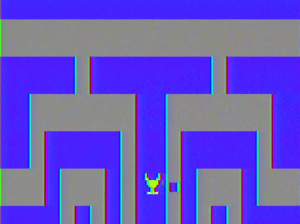
The object of this game is to collect an enchanted chalice that was stolen by an evil wizard and return it to the golden castle. Sounds simple, but you have a few wrinkles to deal with. For one, there are either two or three dragons -depending your difficulty level – that hang around the world map and will eat you if given half a chance. There is a sword in the world that can be used to stab and kill the dragons, though if they eat you, there’s only one way out. You can escape their stomach by resetting the game and respawning at the golden castle, but this will also revive any dragons you’ve killed. And depending on the difficulty level, you may also have to deal with a bat, named Knubberrub by Robinett, that flies erratically throughout the game world, grabbing items – and dragons – and swapping them for new items as it finds them. It will do this even if you’re already holding the item it’s after. The game world also features mazes that don’t exactly line up like you’d expect from a normal, logical map; these take some experimentation to really grasp the quickest way through. The mazes were something Robinett said took considerable thought before being added, and that he’d originally intended for them to be single screen affairs. But due to the quirky VCS hardware, the maze layout needs to be symmetrical on a single screen, so if they were indeed only one screen, this would have been fairly easy to solve.
There are also the black and white castles, and along with the golden castle all of these have a specific key you need to open the gate in the first place. Other items on the game world include the bridge, which can be used to traverse a wall, and a magnet, which will draw all other items to it and is useful for getting things stuck in walls free. The magnet was designed to resolve just that particular bug during development, while the bat exists to keep the game from being too static from playthrough to playthrough. Robinett decided to limit the audio cues to only when events were happening in the game – a sound effect when picking up or dropping an object, sounds for the dragons attacking and eating the player, and another for when they die. And finally, a little tune that plays when the chalice is brought back to the golden castle – not as stellar an ending as Robinett had envisioned, but about the best he could do with how few bytes he had left.
The duck-like dragons themselves deserve a special mention as being one of the first examples of computer opponents exhibiting unique personality traits and goals. Yorgle, the yellow dragon, primarily guards the chalice, but will wander the game world hunting you or assisting his dragon pals provided the golden key is not nearby, as he’s terrified of it. Grundle, the green dragon, guards three vital objects: the magnet, the bridge and the black key, and as such will generally stick around wherever one of those is currently located. Rhindle, the red dragon, guards the white key. The difficulty switches adjust the dragons’ behavior further. The left switch determines whether or not they will hesitate before trying to bite you – the hesitation can give you a chance to escape – while the right switch determines whether or not they are afraid of the sword and will run from it. The dragons all move at different speeds as well, with Rhindle being the fastest and Yorgle being the slowest. Robinett referred to the dragons’ traits as the “chase-flee” list that made them seem more complex without needing a lot of space on the cart to implement. The dragons (and the bat) are all programmed to recognize the objects in the room they’re in and their locations, and will behave accordingly–either fleeing, chasing, or ignoring, which Robinett noted was about all he could fit in the memory he had available. To have the dragons chase the player from room-to-room, he set it up so that they would continue along the same route they were taking when they “lost sight” of the player when they leave the same screen as the dragon – providing ways to trick the dragon and avoid it.
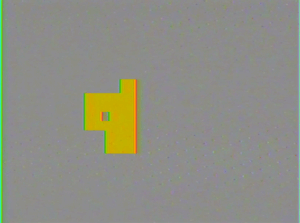
Beyond the switches, the game features three difficulty levels to choose from. The first is essentially a warmup with a smaller game world, two dragons to deal with, no bat, and essentially nothing of note within the existing golden and black castles. Once you’re familiar with the layout and how the game works, you can finish this one in under a couple minutes, but for 1980 this was a very smart choice. The only console game remotely like Adventure was Superman, and that game didn’t have geography that you have to maneuver around. As such, this gives players a pretty low-stress way of getting a handle on the game’s concepts – how to manage items, how to fight dragons, how to move between multiple screens, how to navigate a maze – in this case, the Blue Labyrinth – and open the castle gates. The second difficulty level is essentially the “real game” as Robinett had planned and designed it. Here, the player is dropped into the full Adventure landscape. In addition to the maze from game one, your character must also now navigate catacombs and dungeons, which are mazes where the only light source is immediately around your avatar. The dragons can be found in these darkened mazes, which provides another layer of difficulty when fighting or running from them. The white castle makes its debut here with its red dungeon, while the black castle has been expanded to include the gray dungeon – finishing the game requires players to navigate all these mazes and castles, barring the bat doing something ridiculous like bringing the items you need right to you. Game three uses the same map as game two, but introduces some proto-Roguelike elements by randomizing the locations of every object in the world, including the dragons (who could start locked inside any of the castles). It’s possible to find the chalice straightaway but need to search the entire game world for the gold key to get into the win screen in the first place. It’s a neat way to add a bit of longevity to a game that, once mastered, can be finished pretty quickly.
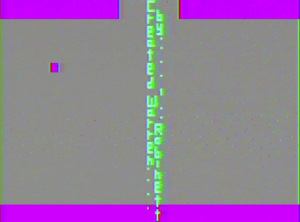
What makes Adventure truly memorable is that it’s the first commercial game to have an undocumented secret, or easter egg, be discovered around the time of its release. It’s not that Adventure had the first easter egg in video games: Atari’s Star Ship arcade game has one hidden that provides free games, while several Channel F carts also included hidden programmer credits going back to the original democart and 1977’s Spitfire, which programmer Michael Glass snuck in with the intention of activating it at stores to show off – though unfortunately for him, Spitfire’s egg doesn’t work on retail cartridges due to a minor hardware change. Even earlier programs such as the Moonlander computer game from 1973 or the text editor TECO from 1968 feature easter eggs. But outside of the developers and their colleagues, none of these were popularly known until the internet came along decades later. Adventure’s secret, on the other hand, only lasted for a few months. On game types 2 and 3, there’s a one-pixel “dot” item hidden in the gray dungeon in a spot reachable only by using the bridge. By bringing it to another screen southeast of the starting point – and by having at least one other object on that screen already – one of the walls will vanish when the dot is dropped, allowing the player to pass into a hidden screen. Inspired by rumors of hidden messages supposedly found when you played Beatles records backwards, Warren Robinett put a secret message, or signature as he calls it, in this hidden room declaring himself as the author of the game. Atari received a letter in August of 1980 from a teen named Adam Clayton who had discovered the dot and the secret room, including detailed instructions on how to get into it. By this point Robinett had departed Atari, so he faced no consequences for his surprise credit. The secret room and message spread by word of mouth in school yards and among gaming enthusiasts before being further popularized in 1982 through the second issue of Electronic Games, and the book How to Master Home Video Games by Tom Hirschfield.
When Clayton’s letter was received by the company, the then-current head of Atari’s consumer division programming staff, Steve Wright, loved it. Wright convinced Atari’s management that this was actually a good thing – players, he argued, would buy Atari games to see if they could find such secrets in future game programs. As a result, programmers were encouraged to follow Robinett’s lead and hide their own secrets in their games whenever possible: a trend that’s continued right up to the modern day. This is to a degree it’s greatest lasting legacy to both video games and popular culture at large, to the extent that an entire book and movie were based on Adventure having this easter egg. Adventure really helped popularize programmers getting credit for their work at a time when they were deliberately made anonymous by game companies, both because they weren’t considered high value employees, and paradoxically so they wouldn’t be as readily poached by other companies. Coincidentally, Activision would begin publishing its own games only a few short months after Adventure’s release, with authorship of each game front and center. Given the timing its unlikely that either event had any influence whatsoever on each other, but this further cemented the trend of crediting developers and ensuring that if you made a game, you deserve to have your name known as an author.
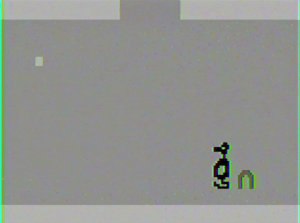
By virtue of coming to market first, Superman broke new ground in the adventure genre, featuring a multi-screen game world, multiple objectives, a narrative structure and surprising visual fidelity for a VCS game. But this isn’t to say Robinett’s Adventure is a lesser product. Rather, while both games do feature some of the same elements (being built on the same skeleton), Adventure excels in ways Superman doesn’t, and vice versa. Adventure’s game world is larger, and requires players to manage their items in a way that simply didn’t exist in Superman. The mix of environments and screen layouts also provides a degree of differentiation that didn’t exist in Superman’s cityscape, where he could simply fly over any potential obstacles. In some ways Adventure bears closer resemblance to later console adventure games like Legend of Zelda, Crystalis, or Atari’s own Haunted House or Secret Quest, as it charges players with equipment management and keeping track of the world.
And in that regard, special mention should be given to Steve Harding, who wrote the game manuals at Atari at the time. Harding not only fleshed out the story behind the game, but had the unenviable task of explaining how a multi-screen adventure game worked for an audience that may not have played the only other game like it, Superman. Robinett wrote in his book that Harding seemed to like Adventure, and was rather receptive to using the names and concepts he’d come up with as he wrote out the manual, notably the dragon names.
Reactions to Robinett’s game seem quite positive at the time. Norman Howe reviewed the title for Space Gamer, noting that it is not a single-screen adventure while praising it for being “conceptually rich.” He wrote that the bat works a little too well as a spoiler and can make the game rather frustrating, but nevertheless called it a good game that is a sign of things to come – though he still found it less interesting and less complex than Superman. Bill Kunkel and Arnie Katz gave the game nearly the full Arcade Alley section of the January 1981 Video magazine, where they talked about it being the first real entry in the fantasy genre popularized by Tolkien on home systems. They write that the game shattered video game conventions, with no scoring or time limit for the player to keep in mind – even Superman doesn’t go quite that far. While they weren’t impressed with the visuals, they dubbed it a “bold departure” from most video games and one every Atari owner will want in their library.
As is routinely the case, sales figures for Adventure don’t really exist for much of the VCS’s life. VGChartz has estimated sales of 1.3 million copies over its entire life, though it’s unclear where they pulled the number from as it doesn’t come up in contemporary reporting. Glimpses of Atari’s internal sales records from the documentary Once Upon Atari show no sign of Adventure in the top 23 sellers, though the cut-off gaps mean we only know the list includes games that sold up to 1.4 million units. Sales in the Atari Corporation years weren’t particularly strong either, as Atari reported only selling 9,150 copies between 1986 and 1988 of the then-aging Adventure game. Of course, by this point it wasn’t the only console adventure game: Nintendo’s Legend of Zelda would come to the west in 1987 and bring in a unique Japanese evolution of the genre. Other western console games such as the Dungeons & Dragons series on Intellivision, Dragonstomper, Raiders of the Lost Ark, ET, Montezuma’s Revenge, Quest for the Rings, and even Pitfall! would build off of what Adventure did in their own ways. Howard Scott Warshaw has even directly stated he wanted Raiders to be the next evolutionary step from Adventure, and reviewers for Atari’s Haunted House frequently called it a successor to Robinett’s work. And while I don’t have any hard evidence to suggest Adventure influenced western developers making computer adventure games through the ’80s, they were undoubtedly aware of it and its game mechanics when they were producing their own titles. The game was certainly a pioneer in designing a scenario specifically for a player to go through and complete a specific goal, with no concern for points or speed – just the thrill of exploring the land and getting the chalice. While that mode of game design wasn’t common on home consoles in the early 80s, it quickly became more popular in the late ’80s right to today – especially with role-playing games.
It’s also hard to dispute the affection the game holds in the minds of VCS enthusiasts. Adventure has been subject to several hacks that change the layout of mazes, adjust the dragon behavior, shift objects around, completely revamp the game map and replace object graphics. One notable hack came from programmer Steve Engelhardt spent an extended period of time hacking Adventure, resulting in Adventure Plus, the culmination of some 200 work-in-progress hack builds finalized March 1, 2003 and updated further in 2005. Also noteworthy are the Suicide Adventure trilogy of hacks, written by George Veeder in 2003. These are effectively the Atari equivalent of the popular “Kaizo” Mario romhacks seen on Nintendo platforms; they all ramp up the difficulty significantly by adjusting the room layouts, increasing the speed of the dragons and bat, and shifting the location of objects to the point where the game is nominally beatable but only for those dedicated to its completion.
A DOS-based remake from 1991 by Craig Pell called Indenture vastly expands the game world from 31 rooms to more than 300; in a 2000 interview with Classic Gaming Quarterly, Pell said he was such a fan of the original that there were spots in the game world that he just wanted to see more of, and that he’d even bring the Easter Egg dot around to other screens. In his Usenet post releasing Indenture, Pell further stated that he had been working with Atari Corp. to formally release it as Adventure for DOS, but after the game rights were licensed to Activision and another round of contract negotiations would be necessary to release it officially, he gave up, changed the name and published it on his website.
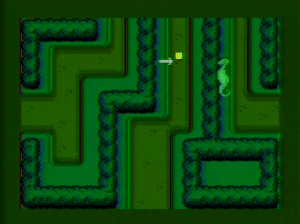
On the console front, a VCS Adventure II was developed by the late Atari historian Curt Vendel and “The Square Trio” and was sold on the AtGames Flashback consoles starting in 2005; this game continues to be available in modern software collections. Ron Lloyd and Keith Erickson developed and published an officially permitted alternate sequel for the Atari 5200 platform called Adventure II in 2007 that has the same basic play loop as the original and similar concepts to the VCS version, but in a new game world that takes advantage of the 5200’s additional hardware capabilities and cart space. These two games have an intertwined history; In an Atariage thread, Lloyd explained that the 5200 game actually went into development first, with demo prototypes and betas posted as early as 2002, and that they struggled to get Atari’s approval for the name, and that at one point it was titled Quest for the Golden Chalice. Vendel got involved, and was able to clear the Adventure II name for their homebrew game in exchange for Lloyd providing their world map to create a scaled-down VCS version for the Flashback 2 dedicated console. Some of Lloyd’s other ideas for the 5200 cart got nixed by Atari, such as including the original game world as a hidden kingdom and using the bat (though Atari did relent on this point after he had come up with an alternative, a troll).
This would be the final video game Warren Robinett worked on at Atari, though we still have one more program of his to look at in the next video. In either event, Robinett left Atari around June 1979, annoyed at his treatment by his managers. While Warner CEO Manny Gerard reportedly recognized that Adventure was a sign of what game design was going to look like in the coming years, neither he nor Atari CEO Ray Kassar wanted to translate that into any kind of benefits for Robinett. He ultimately taking a job doing educational software for the Apple II, co-founding The Learning Company alongside three other developers where he notably authored the award-winning Rocky’s Boots, a digital logic circuit game. For his work in developing a new home game genre, he received no royalties and nothing beyond his $20,000 a year salary for the time he worked at Atari. But he did gain recognition thanks to his “signature” in Adventure, which he credits as helping him find work down the line in the field of virtual reality.
Adventure wraps up Atari’s incredible, system- and genre-defining pair of March releases for the VCS. Very few time frames or specific games affected the trajectory of Atari’s home platform quite like March 1980 did with Adventure and Space Invaders, and we are fast approaching the next such inflection point with the release of the first four Activision games in the summer. But I’d be hard-pressed to think of any individual games published in 1980 quite as noteworthy as these two, and Adventure would sit not only as a special experience on the platform for some time to come, but one that’s just as playable now as it was when it was published 40 years ago. If Space Invaders “won” the financial side of the argument among VCS developers on whether original games or arcade conversions were better to create for the platform, Adventure provides an incredibly strong counterpoint that there are wonderful game ideas that just would only ever work in the home.
Sources:
Making the Dragon, Warren Robinett, 2021 version (unpublished as of this writing)
John Dunn, interview with Randy Ball, Gamechambers.com, 2000
Sonar Prototype Found thread, Atariage, March 22 2023
Sonar, Matt Reichert, Atariprotos
Somewhere Nearby is Colossal Cave: Examining Will Crowther’s Original “Adventure” in Code and in Kentucky, Dennis Jerz, Digital Humanities Quarterly, 2007
Moonlander: One Giant Leap for Game Design, Kate Willaert, acriticalhit.com, April 11 2021
Make Love Not War: Talking With The Creator of the First Software Easter Egg, Kate Willaert, acriticalhit.com, May 23 2021
Craig Pell: Indenture’s Servant, Kyle Snyder, Classic Gaming Quarterly, Spring 2000
It Begins, Craig Pell, rec.games.video.classic, Sept. 2 1995
Adventure Reboot taken down, Atariage, Feb. 14 2010
Steve Engelhardt Adventure Hacks, Atariage, Jan. 21 2024
5200 Adventure II Chronicles and DLC, Atariage, Oct. 28 2023
Adventure II Chronicles, Ron Lloyd, accessed May 3 2025
Release date sources:
Superman, September 1979 – Source: Honolulu Star Bulletin, September 13 1979; Honolulu Star Bulletin, September 27 1979; Washington Post, October 19 1979; Frankfort Star, December 2 1979; Merchandising, June 1979; The Herald News, November 21 1979
Adventure, March 1980 – Source: Chicago Tribune, March 23 1980; Washington Post, March 28 1980; Honolulu Star Bulletin, April 3 1980; Plain Dealer, April 9 1980
Haunted House, February 1982 – Source: Atari Age, November/December 1982; Analog, January 1982
Pitfall!, September 1982 – Source: Park City Daily News, September 26 1982; Central New Jersey Home News, November 13 1982; Activisions, Fall 1982
Raiders of the Lost Ark, November 1982 – Source: Computer Entertainer, December 1982; Atari Age, November/December 1982
E.T The Extra Terrestrial, December 1982 – Source: Atari Age, November/December 1982; Computer Entertainer, October 1982; Colorado Springs Gazette, November 13 1982
Dragonstomper, October 1982 – Source: Computer Entertainer, January 1983; Computer Entertainer, September 1982
Secret Quest, May 1989 – Source: Atarian, May/June 1989
Indenture, Sept. 2 1995 – Source: rec.games.video.classic usenet group post at https://home.hiwaay.net/~lkseitz/cvg/Indenture.html
Adventure II (VCS), August 2005 – Source: Atariage.com Flashback 2 review
Adventure II (5200) May 7, 2007 – Source: Adventure II Archives
